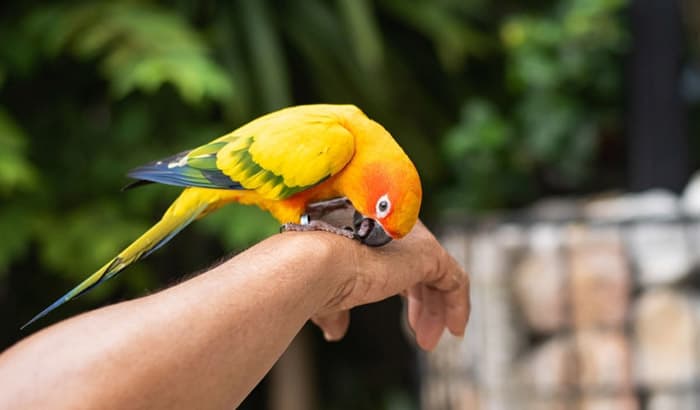Birds, like any animal, can break their beak if they bite down too hard on something or use it as leverage while climbing. This can happen if the bird has fallen, smashed into something unexpectedly, or had its beak trimmed incorrectly at some point in time.
Bird owners may notice that birds with damaged or improperly trimmed beaks don’t eat properly like birds with healthy ones. In some cases, the birds may start opening food containers and tearing them apart. Therefore, bird owners want to know what they should do when their birds’ peak is too long.
If you are among them, here are some simple steps on how to trim your birds’ beaks without hurting them.
Contents
How to Trim Bird Beak?
If you’re unsure whether or not you should attempt to trim your bird’s beak yourself, I recommend taking it to a veterinarian who specializes in avian care for assistance instead.
A veterinarian specializing in avian care will indeed take care of this without hurting your pet. They will know exactly what needs to be done to keep your bird’s beak healthy and trimmed.
In case you want to do it at home, there are a few things that you should keep in mind:
1. Ask for Advice from your Local Vet
You should know which part of the beak needs trimming since different birds’ beaks are different. Please do not do it spontaneously, or else you risk hurting your birds badly.
2. What to Prepare
The first step is to gather all the materials you’ll need for trimming your bird’s beak.
- A grinding tool – If you have a high-speed drill specialized in cutting beaks, ask your veteran how to use it correctly.
- A nail file – If you do not have a grinding tool, then a nail file would do.
- Bird clippers (or animal clippers) – We should avoid using clippers if possible. However, if you do not have those two tools above, make sure to prepare an animal clipper that’s explicitly used for clipping wings, feathers & beaks on birds/pets.
- Styptic powder or cornstarch/flour – It is necessary to prepare beforehand in case it might bleed a little.
3. Calm your Bird down
The third step would be to calm your little one down before attempting trimming its beaks!
When the bird feels threatened, it tends to puff up, making clipping harder. And, suppose it struggles during the procedure, mainly because its beaks have less room between each other. It might force itself out of where you’re trying to clip.
You may consider covering your pet’s head with a towel after calming it down for this to be less stressful for the both of you.
4. Carefully Trim the Bird’s Beaks
Make sure that you’re cutting in the right spot by looking at where its beak curves. Then, following this curve will help prevent any injuries from happening.
Birds tend to break or crack their beaks if they struggle too much, so it’s important to go slow and not force anything.
If needed, apply a styptic powder/cornstarch mixture to stop bleeding after clipping.
5. Keep an Eye on your Bird’s Beak Trimming Progress
You can schedule a follow-up appointment depending on how fast their beaks grow back! Trimming your birds’ be should only take a few minutes every month to keep their beaks the right size.
Give them some food like grapes as an incentive reward because this will help reduce stress levels which are important considering how sensitive birds are during these procedures. This should make it easier to trim their next time around if the need arises!
Note on Trimming Beaks
Keep in mind that when you take this route for your bird, there are two possible outcomes: either break off part of the beak or altogether remove all four sides so that it can grow back normally.
If you do not want any additional pain for your pet during this process, try using a Dremel tool with sandpaper instead of clipping its beak with scissors since birds tend to bleed faster than other animals and will likely cause more stress by doing so.
Make sure that the blade you’re using is sharp. Dull blades can cause more damage than sharp blades, so carefully check the trimming tools before use.
You should also consider holding onto one side whelming because birds don’t feel pain the same way that mammals do.
Beaks are made up of keratin which grows back when trimmed. Be careful not to break the beak off! When trimming your bird’s beak, take care to only clip the sharp edges off instead of breaking the entire thing off.
Conclusion
We’ve talked about trimming the beak in detail and advice on how to do it right. With these easy steps, you can trim your pet bird’s beak at home.
However, it is always best to consult with a veterinarian before attempting this process on your own. And, make sure to contact the veterinarian if anything goes wrong. Do not second-guess things when it comes to your pet’s health and safety.



Thanks a lot. A bird’s beak is an essential part of avian species. Birds use them for many things, such as eating, playing, feeding their young, and even building nests. So your article has given me useful advice for me and now I need to do.
So do I need to cut a bird’s beak?